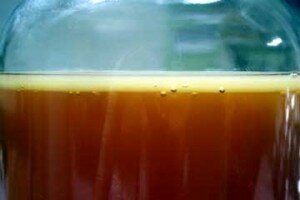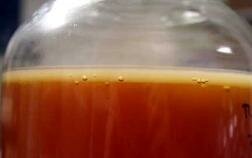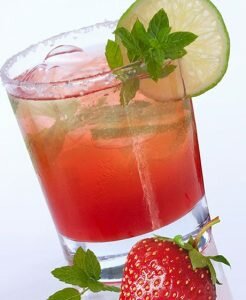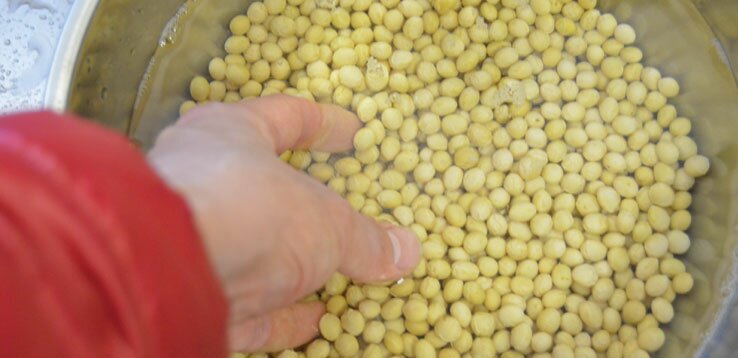The name Kombucha or Kombu Cha refers to any of a variety of preparations of fermented, lightly effervescent sweetened black or green tea beverages that are commonly used as functional beverages for their detoxifying and other health benefits. Kombucha is found in many cultures in…
China it is called: chájūn (茶菌),
Japanese: kōcha-kinoko (紅茶キノコ),
Korean: hongchabeoseotcha (홍차버섯차), &
Russian: chaynyy grib (чайный гриб).

In this Blog page, we are talking not of different flavorings of kombucha, whether through herbs, fruits or sugars but to different strains themselves. Today in the west, other kombucha type ferments or stains are known as kombu tea SCOBY, JUN or Jun Honey culture, Snow leopard, Monk Tea, Himalayan strain, and Kocha-Konko Kombu. Much is unknown on the origins of the strains, how they traveled the globe, and their cultural makeup. We have traveled throughout the world looking for new cultures, like our water kefir strains and yogurts.
We have brought back kombucha tea cultures from many places.
Friends and customers have sent them, too.
Many call the kombucha culture a ‘mushroom’, however, KT does not produce spores like fungi mushrooms and really is a culture or SCOBY of yeasts and bacteria. Kombucha production starts by fermenting a tea/sugar solution using a “symbiotic colony of bacteria and yeast strains (SCOBY)”. The actual contributing microbial populations in the kombucha cultures vary, but the yeast component generally includes Saccharomyces and other species, and the bacterial component usually includes Gluconacetobacter xylinus to oxidize yeast-produced alcohols to acetic and other organic acids.
 Common Kombucha Strain – Most widely known strain in the USA and the west. Many sellers are producing cultures for sale over the internet. The culture produces the familiar taste and
Common Kombucha Strain – Most widely known strain in the USA and the west. Many sellers are producing cultures for sale over the internet. The culture produces the familiar taste and
standard flavor used by commercial and home brewers alike.
Traditionally kombucha maintained with black tea and cane sugar.
 Kombucha Monk Tea Strain – A strain from Tibet made with raw honey, Pu-erh tea, and herbs like goji berries. This strain produces a rose-colored culture and taste, unlike the standard strain.
Kombucha Monk Tea Strain – A strain from Tibet made with raw honey, Pu-erh tea, and herbs like goji berries. This strain produces a rose-colored culture and taste, unlike the standard strain.
Procured from monks in different Tibetan monasteries,
it is one of our favorites!
 Imperial Place Strain – Imperial Place strain is not very renowned or even seen by the common masses. Said to be for royalty only. Chinese legend says that even the palace workers may not view the culture. This culture type seems unavailable to the public and only known through legend. The stories may be true or
Imperial Place Strain – Imperial Place strain is not very renowned or even seen by the common masses. Said to be for royalty only. Chinese legend says that even the palace workers may not view the culture. This culture type seems unavailable to the public and only known through legend. The stories may be true or
just a myth, only time may tell.

Russian Red Rose Strain – A strain called ‘chaynyy grib’, said to have survived World War II by using ingredients on hand. In this culture strain’s, upkeep and tradition, brewing happened mainly with herbs (such as rose hips and elder berries) vs. tea, with the introduction of honey or sugar beets as the sweetening agent verses processed cane sugars. Tea and sugar were rationed or unavailable to the common person at that time. Over time, this culture has adapted to the new ingredients. It produces a red colored culture from the beets and herbs used in the brewing cycle.
Today many people use sugar again due to availability, however,
traditionalist still use the old style recipes.
 Japanese Kocha Kinoko Kombu Strain – Supported with matcha green tea and sea vegetables Kombu Cha is very healing culture strain. Kombu Kombucha provides umami flavor, nutrients, anti-oxidants, and minerals from the matcha tea and seaweeds used. This strain produces a very clear white culture unlike the
Japanese Kocha Kinoko Kombu Strain – Supported with matcha green tea and sea vegetables Kombu Cha is very healing culture strain. Kombu Kombucha provides umami flavor, nutrients, anti-oxidants, and minerals from the matcha tea and seaweeds used. This strain produces a very clear white culture unlike the
traditional kombucha culture.
 Himalayan Kombucha Strain – Regionally sustained kombucha strain from Northern India. Most likely, this strain of scoby migrated from China or Tibet through the trade routes. This kombucha strain is maintained on raw sugars and fruits, with no tea used in the fermentation process. Tea is an expensive commodity to many in India and may be why this strain developed & adapted without
Himalayan Kombucha Strain – Regionally sustained kombucha strain from Northern India. Most likely, this strain of scoby migrated from China or Tibet through the trade routes. This kombucha strain is maintained on raw sugars and fruits, with no tea used in the fermentation process. Tea is an expensive commodity to many in India and may be why this strain developed & adapted without
the need for tea in the brewing process.
 Jun Honey Culture – Becoming more popular in the west. Some brewers and sellers of cultures try using a kombucha culture with honey; however, this does not make it JUN.
Jun Honey Culture – Becoming more popular in the west. Some brewers and sellers of cultures try using a kombucha culture with honey; however, this does not make it JUN.
However, close to kombucha culture, it is a bacterial/yeast strain unto its self. Sometimes it is called kombucha honey culture, however, it is a different culture altogether.
It is widely found in parts of western Tibet. Each province of China has a version of Chang beer, in some parts of Tibet the beer has Jun in it. The most easily found and tastiest Jun in Tibet comes from the Khampa Nomads – former monks turned physical and spiritual warriors who learned their knowledge of how to make Jun from the Bonpo monks. The warrior/monks would carry the JUN with them as they rode into battle using it as a tonic, energy booster,
and maybe a little alcohol, too!
 Snow Leopard JUN Strain – The rarest form of Jun is the “snow leopard” and one taste gives the equivalent effect of increased energy and stamina. The Bonpo monks who produce this fine Jun are of Taoist, Buddhist, and Shamanic origins and are thought to have been gifted an heirloom culture by Lao Tzu.
Snow Leopard JUN Strain – The rarest form of Jun is the “snow leopard” and one taste gives the equivalent effect of increased energy and stamina. The Bonpo monks who produce this fine Jun are of Taoist, Buddhist, and Shamanic origins and are thought to have been gifted an heirloom culture by Lao Tzu.
This Jun strain is very, very hard to find.
We hope you have found this blog page helpful in learning more about kombucha types and introducing people to new strains from other areas around the world. We are always on the lookout for more cultures to add to the ‘culture bank’, which allows others access to less common culture types. We have some of the culture strains listed above that are available at our culture store/bank. Instructions for the cultures we maintain can be found on our main website organic-cultures.com.
Happy Culturing!
Live, Grow, and Share Cultured Foods.
 ~ Sagyua, Gaam, Bae Kimchi ~ Instant Apple, Pear, and Persimmon Kimchi (Traditional Winter Type)
~ Sagyua, Gaam, Bae Kimchi ~ Instant Apple, Pear, and Persimmon Kimchi (Traditional Winter Type)


 Looking for something different to drink this summer…try our some traditional fermented beverages…Enjoy!
Looking for something different to drink this summer…try our some traditional fermented beverages…Enjoy!





 Imperial Place Strain – Imperial Place strain is not very renowned or even seen by the common masses. Said to be for royalty only. Chinese legend says that even the palace workers may not view the culture. This culture type seems unavailable to the public and only known through legend. The stories may be true or
Imperial Place Strain – Imperial Place strain is not very renowned or even seen by the common masses. Said to be for royalty only. Chinese legend says that even the palace workers may not view the culture. This culture type seems unavailable to the public and only known through legend. The stories may be true or



 Snow Leopard JUN Strain – The rarest form of Jun is the “snow leopard” and one taste gives the equivalent effect of increased energy and stamina. The Bonpo monks who produce this fine Jun are of Taoist, Buddhist, and Shamanic origins and are thought to have been gifted an heirloom culture by Lao Tzu.
Snow Leopard JUN Strain – The rarest form of Jun is the “snow leopard” and one taste gives the equivalent effect of increased energy and stamina. The Bonpo monks who produce this fine Jun are of Taoist, Buddhist, and Shamanic origins and are thought to have been gifted an heirloom culture by Lao Tzu.
 – Soak with clean water for 9 to 12 hours (longer soaking time recommended during colder months). Be sure to use approximately 3 parts water and 1 part soybeans to allow for expansion. You will end up with 8 to 12 cups of beans.
– Soak with clean water for 9 to 12 hours (longer soaking time recommended during colder months). Be sure to use approximately 3 parts water and 1 part soybeans to allow for expansion. You will end up with 8 to 12 cups of beans.




 At the conclusion of the fermentation period, let the NATTO cool for a couple of hours, then remove the lid and the cloth, replace the lid, and store the containers in the
At the conclusion of the fermentation period, let the NATTO cool for a couple of hours, then remove the lid and the cloth, replace the lid, and store the containers in the



